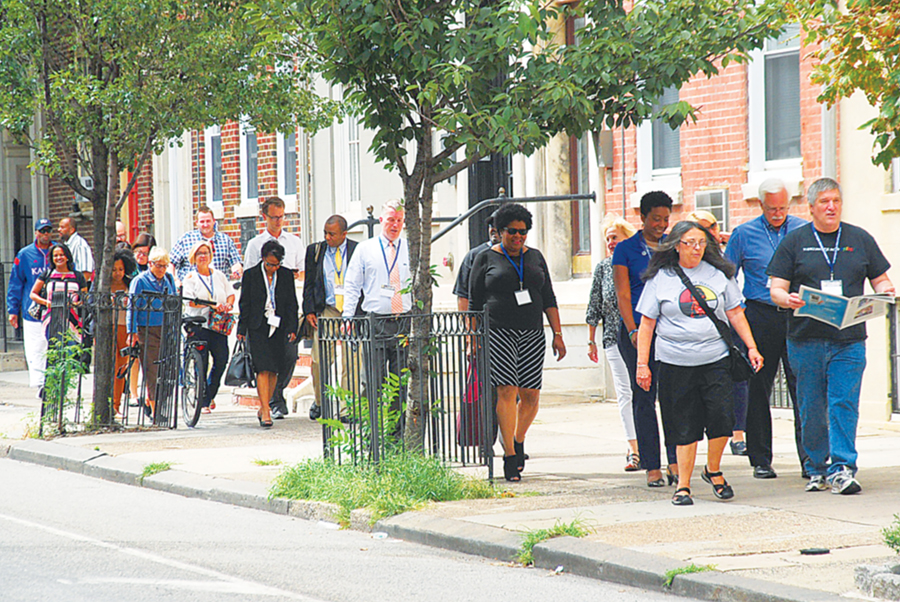Although not marked by a rainbow flag, Rittenhouse Square played an important part for LGBT people in Philadelphia.
“It was a gay meeting spot in the ’60s and ’70s,” said Bob Skiba, archivist at William Way LGBT Community Center. “Gay people have always found ways to make public spaces their own, being visible and invisible at the same time.”
He outlined the routes of the first Gay Pride parades in the city in the 1970s. They started at Rittenhouse and ended at Independence Hall, where early gay-rights protesters held Annual Reminder marches.
Skiba led an hour-long tour Aug. 8 for about 50 representatives from human-rights agencies across the country. Another 50 were on a bus with William Way’s executive director, Chris Bartlett.
They were in Philadelphia for the 67th-annual conference of the International Association of Official Human Rights Agencies. This year spotlighted LGBT rights for the first time and Rue Landau, executive director of the Philadelphia Commission on Human Relations, organized many of the week’s activities.
Earlier in the day, the human-rights leaders heard from Dr. Rachel Levine, Pennsylvania physician general and a transgender woman, and David Johns, the out head of the White House Initiative on Educational Excellence for African Americans. They also got a primer on gay-rights pioneers, from Henry Gerber in Chicago to Barbara Gittings and Frank Kameny in Philadelphia.
The tour started in the Gayborhood. Fifty years ago, Skiba said, its location in Center City was not desirable. Prostitutes and drug dealers frequented the area and crime was high. Gay bars sprung up in the alleys and gay men were nicknamed Spruce Street Boys. Skiba said it was common for gay neighborhoods to develop in seedy parts of cities.
He said Philadelphia first installed 63 rainbow street signs in 2003 as the Gayborhood became a cultural hotspot. Some streets have additional designations, naming portions of them after LGBT leaders.
Landau pointed out “Gloria Casarez Way” on 12th Street near the mural painted to honor the first head of the Philadelphia Office of LGBT Affairs.
“She was a great advocate,” Landau said. “She was also a lifelong friend of mine.”
The two knew each other for 20 years, working on everything from fair housing to LGBT rights.
Several times, Skiba hit on the importance of social change using the power of coalitions. He said activists first pushed for a gay-rights bill in Philadelphia in 1974. But it wasn’t until 1982, with the help of the African-American community, that the bill easily passed.
Skiba also showed off the John C. Anderson Apartments, the first affordable LGBT senior-housing community in the country; Giovanni’s Room, one of the oldest LGBT bookstores in the country; and the location of the annual AIDS Walk at the Philadelphia Museum of Art.
Thomas H. Randolph, manager of the civil-rights division of the Human Relations Department in Kansas City, Mo., reflected on his first day at the conference. He said he learned some things about working with transgender individuals that he’d like to take back to his agency.
“Based on what I saw here, we’ve got a way to go with the language,” he said.
